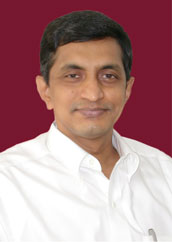
(The
author is the
National Coordinator of Lok Satta movement and National Campaign
for Electoral Reforms)
|
Maharashtra now joins two other
major states in reversing rational management policies in
power sector. Congress swept to power in AP with the promise
of free power in May, 2004. In Tamil Nadu, Ms Jayalalitha's
government too reversed its earlier policy and opted for free
power in the face of massive rejection of the ruling combine
in the Lok Sabha elections. Sadly, Maharashtra and Tamil Nadu
SEBs are two of the better-managed ones in India, and both
are now set up for failure. AP utilities were struggling for
years to make ends meet, and free power and write-off of arrears
set them back significantly.
In many ways, the fiscal and
industrial future of the Indian states, their productivity
and investments will largely depend on this key infrastructure
sector. Let us look at the grim facts. The cost of power supply
in AP in 2001-02 was 361 paise / KWH, whereas average tariff
was 222 paise / KWH, resulting in a loss of Rs. 1,194 crores
even after receiving a huge subsidy (Rs 1,626 crores) from
the state. The corresponding figures for Maharashtra were
358 paise, 270 paise, and Rs 3524 crores losses; and for Tamil
Nadu, 310 paise, 237 paise, and Rs 2260 crore losses. The
total losses of the power boards of major states in 2001-02,
after receiving subsidies, were a whopping Rs 24,837 crores!
|
|
Meanwhile
access and availability of power are at appalling levels.
Less than 50 percent of all population has access to electricity,
and rural access is about 33 percent! For over a decade there
is talk of reform. But results are dismal. The power availability,
and losses speak for themselves. As opposed to 4-8% transmission
and distribution (T&D) losses in developed countries,
and 10-14% losses in South-east Asia and Mexico, T&D losses
in India are about 28%! Nobody knows the real figures, because
in many states there is no proper energy audit. For instance,
in AP, only about 46% of all the power produced is metered
and billed. The balance 54% goes towards unmetered agricultural
power, or is lost in transmission, or stolen (euphemistically
termed 'commercial losses'), or lost due to poor distribution
network ('technical losses')! At best we have a broad picture
of what is happening. But we have no desire to localize the
problems and solve them through managerial and technical interventions.
If the Indian state is withering away, the near-collapse of
the power sector is symptomatic of that.
The really sad part is that
in recent years some urgency was being shown to address this
crisis; but recent political events have now led to a domino
effect deepening the crisis. Three of the 'better' states
have now announced free, unmetered power to agriculture and
others will be compelled to follow suit. The Central Electricity
Act forbidding unmetered power, or realization of less than
a minimum tariff has been relegated to the dustbin.
|
|
Surely the
union government can do better than resort to pious homilies
and periodic diktats in the face of this mounting crisis which
is bound to have catastrophic consequences. True, every party
succumbs to the logic of the ballot box. But inaction is not
an option. There are creative and politically least-costly
solutions available.
First, farm sector undoubtedly
is in distress. But to pretend that free power is the answer
is sheer hypocrisy. The real answers lie not in additional
subsidy but in increasing capital investment (irrigation and
soil conservation), enhancing productivity (technology, extension
and inputs), better infrastructure (storage, transport and
marketing), and value-addition (agro-processing, grading and
packaging). For instance, in AP, already agri-power was heavily
subsidized, and the added relief on account of free power
was only Rs.400 crores per annum - about 1% of state's budget!
Farm sector deserves ten times more support, but by other
means, not by undermining power sector.
Second, agri-power issue should
be de-linked from economic tariffs and cost recovery. The
issue must be linked to water and power conservation, and
energy auditing. Unmetered power (free or with slab tariff)
is a recipe for disaster as it encourages high water and power
consumption. Precious ground water in dry areas is depleted
by indiscriminate use; water-intensive crops are raised by
the few lucky farmers who strike water, at the cost of others.
There is no incentive to save power, and inefficient pumps
and motors and absence of capacitors in many cases are leading
to criminal waste of power and environmental damage. Most
of all, unmetered power makes energy auditing impossible,
and thefts, corruption and gross inefficiencies go unchecked.
Metering, free or low-cost power up to a ceiling, graded tariffs
linked to consumption, and targeting concessions to dry crops
and small farmers are vital and necessary.
Finally, the real problem in
power sector is distribution management. The 28% T&.D
losses (possibly over 30% in several states) must be brought
down to 15% or lower. That needs proper metering of all consumers,
energy balance at sub-station, feeder and transformer levels,
specific local interventions to curb thefts, and investments
to stop technical losses. The states no longer have that capacity.
We need to decentralize distribution at sub-station and feeder
level, and invite local entrepreneurs to manage them through
competitive bidding process, giving proper incentives linked
to reduction of distribution losses. Local knowledge, profit-motive,
and their capacity to manage local, political economy will
reverse the vicious cycle. What's more, a million youngsters
can find employment all over India in distribution management,
as local monitoring is a low-tech, labour-intensive job.
Once we combine these three
strategies, it will be a win-win situation for both agriculture
and power sector. What we need is bold leadership and integrated
approach to the crisis, not disaggregated, isolated, desultory
action; innovation, not shibboleths and business-as-usual;
win-win solutions, not zero-sum game. Will our politicians
and managers stop dithering and act resolutely?
|



